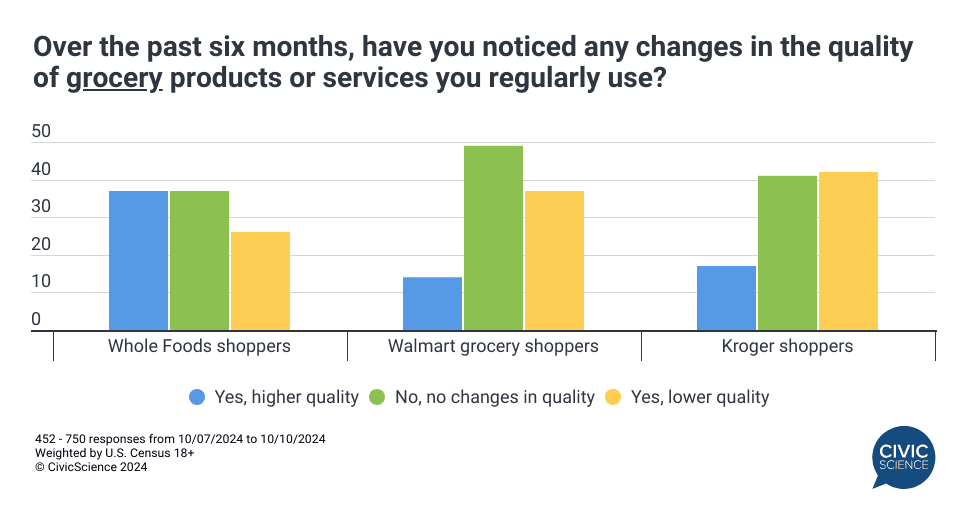This is just a sneak peek at the thousands of consumer insights available to CivicScience clients. Discover more data.
What We Know
Last month, Whole Foods was forced to undo changes to one of its cake products after consumer backlash online. This was just one of several cases of ‘skimpflation’ making the rounds. Similar to shrinkflation (when companies decrease product sizes without lowering prices), skimpflation is when companies cut costs by decreasing quality. Just how many consumers are noticing the skimpflation trend?
Take Our Poll: Over the last six months, have you noticed any changes in the quality of products or services you regularly use?
What We’re Seeing
Consumers weighed in on which product categories they have noticed a trading down in quality over the past six months. Here’s what CivicScience data show:
- Most consumers say they have not noticed a recent decline in quality in electronics, household products, or personal care/cosmetic products.
- More than 40%, however, have noticed a decrease in quality when it comes to restaurants/fast food, grocery products, and clothing.

- Perhaps the Whole Foods cake snafu was an isolated incident for the retailer. Narrowing in on the grocery category, data also show that regular Whole Foods shoppers (who shop more than once a month) are far less likely than Kroger or Walmart grocery shoppers to have noticed lower quality in the products they typically buy. In fact, nearly 40% report they’ve noticed better quality.
- Kroger shoppers are the most likely to encounter skimpflation in the grocery products they purchase, while nearly half of Walmart shoppers haven’t noticed much of a difference.

Join the Conversation: Do you tend to shop for products that are more affordable or better quality?
What to Take Away
Like shrinkflation, consumers are clearly wise to ‘skimpflation’ practices, and are growing more aware with viral social media posts. However, the data suggest awareness varies significantly by category type and retailer, as well as shopping habits – consumers who value “price” more than “brand” when grocery shopping are far more likely than those who prioritize brand to have noticed decreasing quality in their grocery products.








